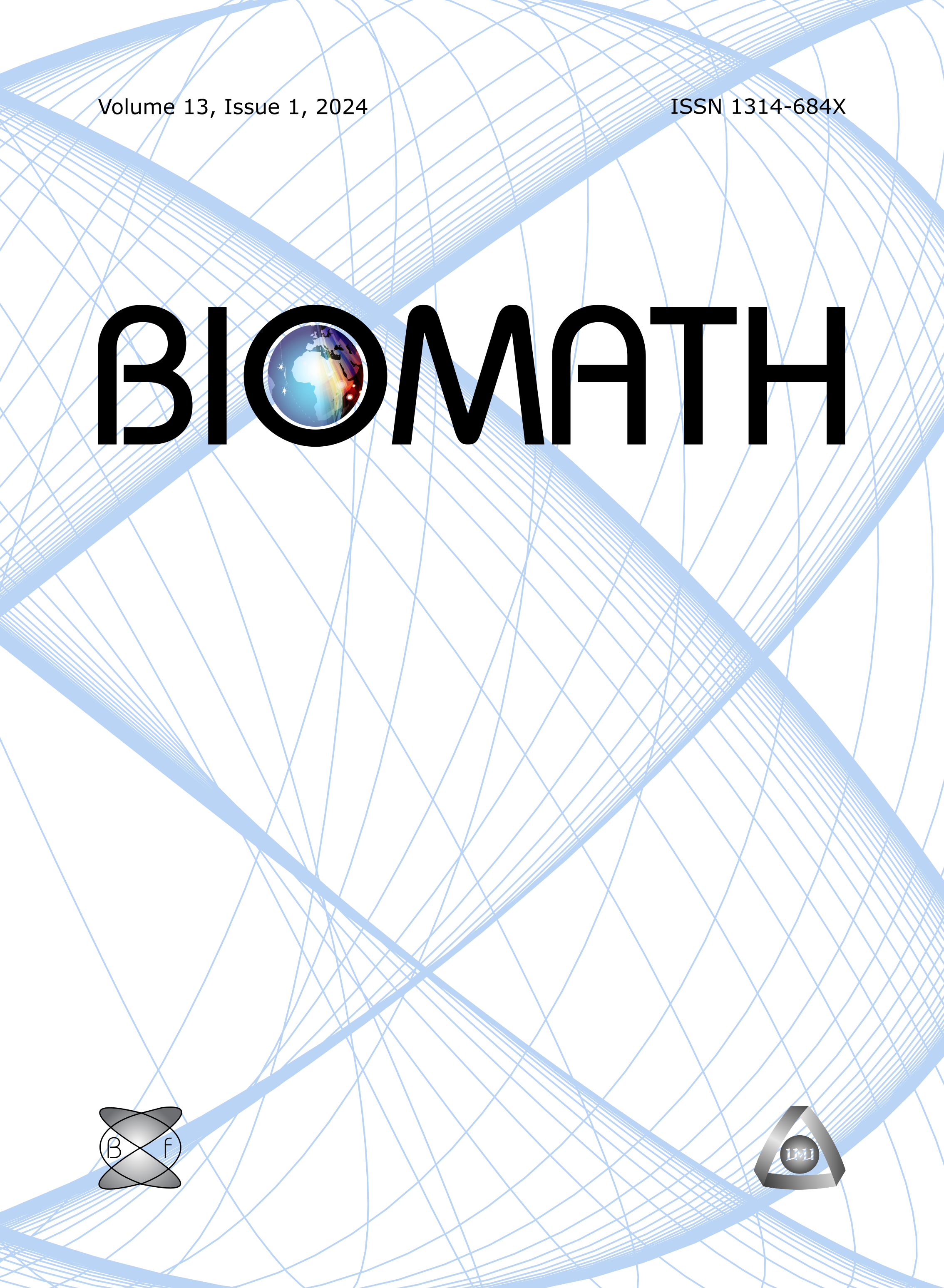Mechanotransduction caused by a point force in the extracellular space
DOI:
https://doi.org/10.11145/j.biomath.2018.10.197Keywords:
analytical solution, extracellular matrix, integrin, intracellular cytoskeleton, mathematical model, mechanotransduction, mechanical bidomain model, point sourceAbstract
The mechanical bidomain model is a mathematical description of biological tissue that focuses on mechanotransduction. The model’s fundamental hypothesis is that differences in the intracellular and extracellular displacements activate integrins, causing a cascade of biological effects. This paper presents analytical solutions of the bidomain equations for an extracellular point force. The intra- and extracellular spaces are incompressible, isotropic, and coupled. The expressions for the intra- and extracellular displacements each contain three terms: a monodomain term that is identical in the two spaces, and two bidomain terms, one of which decays exponentially. Near the origin the intracellular displacement remains finite and the extracellular displacement diverges. Far from the origin the monodomain displacement decays in inverse proportion to the distance, the strain decays as the distance squared, and the difference between the intra- and extracellular displacements decays as the distance cubed. These predictions could be tested by applying a force to a magnetic nanoparticle embedded in the extracellular matrix and recording the mechanotransduction response.Downloads
Published
Issue
Section
License
The journal Biomath is an open access journal. All published articles are immeditely available online and the respective DOI link activated. All articles can be access for free and no reader registration of any sort is required. No fees are charged to authors for article submission or processing. Online publications are funded through volunteer work, donations and grants.
Authors who publish with this journal agree to the following terms:
- Authors retain copyright and grant the journal right of first publication with the work simultaneously licensed under a Creative Commons Attribution License 4.0 that allows others to share the work with an acknowledgement of the work's authorship and initial publication in this journal.
- Authors are able to enter into separate, additional contractual arrangements for the non-exclusive distribution of the journal's published version of the work (e.g., post it to an institutional repository or publish it in a book), with an acknowledgement of its initial publication in this journal.
- Authors are permitted and encouraged to post their work online (e.g., in institutional repositories or on their website) prior to and during the submission process, as it can lead to productive exchanges, as well as earlier and greater citation of published work (See The Effect of Open Access).

